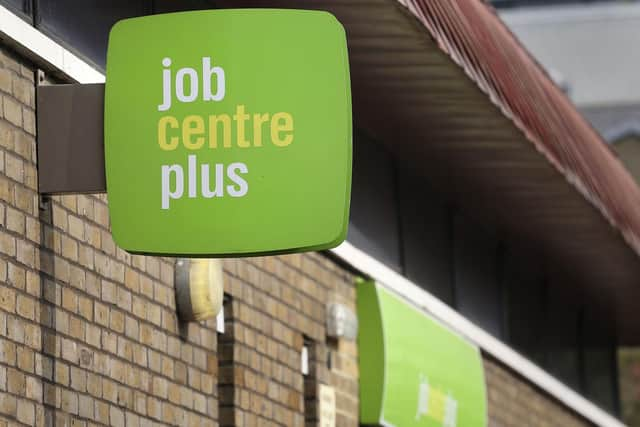Employment rises across Lancashire as expected furlough redundancies fail to materialise
and live on Freeview channel 276
The Office for National Statistics said payrolled workers jumped by 0.6 per cent between September and October to 29.3 million – “well above” levels seen before the pandemic struck.
Across Lancashire the number of people claiming work-related benefits such as Universal Credit also fell as more people moved into work.
Advertisement
Hide AdAdvertisement
Hide AdThe unemployment rate nationally fell once more to 4.3 per cent between July to September, down from 4.5 per cent between June and August, in spite of the furlough scheme coming to an end on September 30 which many feared would lead to a mass jobs loss from struggling businesses.


The ONS said survey responses so far suggest only a small number of redundancies have been made among the 1.1 million still on furlough when the scheme closed.
Sam Beckett, ONS head of economic statistics, said: “It might take a few months to see the full impact of furlough coming to an end, as people who lost their jobs at the end of September could still be receiving redundancy pay.
“However, October’s early estimate shows the number of people on the payroll rose strongly on the month and stands well above its pre-pandemic level.”
Advertisement
Hide AdAdvertisement
Hide AdShe added: “There is also no sign of an upturn in redundancies and businesses tell us that only a very small proportion of their previously furloughed staff have been laid off.”
The data also showed that job vacancies reached a new record high, up 388,000 between August and October to 1.17 million as the reopening of the economy continued to drive demand for recruitment.
In the North West, there were 245,360 people claiming work benefits in October, which represented 5.4 per cent of the population, a figure which was down 1.4 per cent on the same month in 2020.
In the Blackpool North and Cleveleys constituency, 3,195 people were claiming, 6.5 per cent of the population there, a figure down 2.3 per cent on last October.
Advertisement
Hide AdAdvertisement
Hide AdIn Blackpool South there were 4,640 claimants, 9.5 per cent of the population, down 2.6 per cent on last October.
Preston had 4,370 claimants, 6.7 per cent of the population, down 1.3 per cent, while Chorley had 2,215, 3.4 per cent, down 1.1 per cent on last year.
Fylde saw 1,730 claimants, 3.5 per cent of the population, down 1.7 per cent on last October, Lancaster and Fleetwood had 2,235 claiming, 3.7 per cent, down 1.1 per cent.
The Ribble Valley had 1,445 claimants, 2.4 per cent of the population, down 1.2 per cent, South Ribble had 1,615 claiming, 2.7 per cent, down 1 per cent and Wyre and Preston North had 1,220 claimants, 2.3 per cent, a figure down 1.1 per cent on last October.
Advertisement
Hide AdAdvertisement
Hide AdHead of Economics from the British Chambers of Commerce, Suren Thiru, said: “The marked rise in payroll employment suggests that the end of furlough had little effect on the UK jobs market in October, as demand for labour continued to surge.
“Record job vacancies suggest that the chronic staff shortages encountered by businesses are intensifying and this could derail the recovery by forcing firms into a more long-lasting decline in their operating capacity.
“Although earnings growth remains elevated, achieving wage increases over a sustained period may prove challenging without a marked improvement in productivity and an easing of the cost pressures faced by firms.
“Despite the success of furlough, the likely squeeze on hiring intentions from next year’s national insurance hike and more sluggish growth could mean that labour market conditions start to weaken over the medium term.
Advertisement
Hide AdAdvertisement
Hide Ad“More significant support is needed to help firms access the skills they need when they can’t recruit locally, including supporting the hardest hit sectors through expansion of the Shortage Occupation List.”